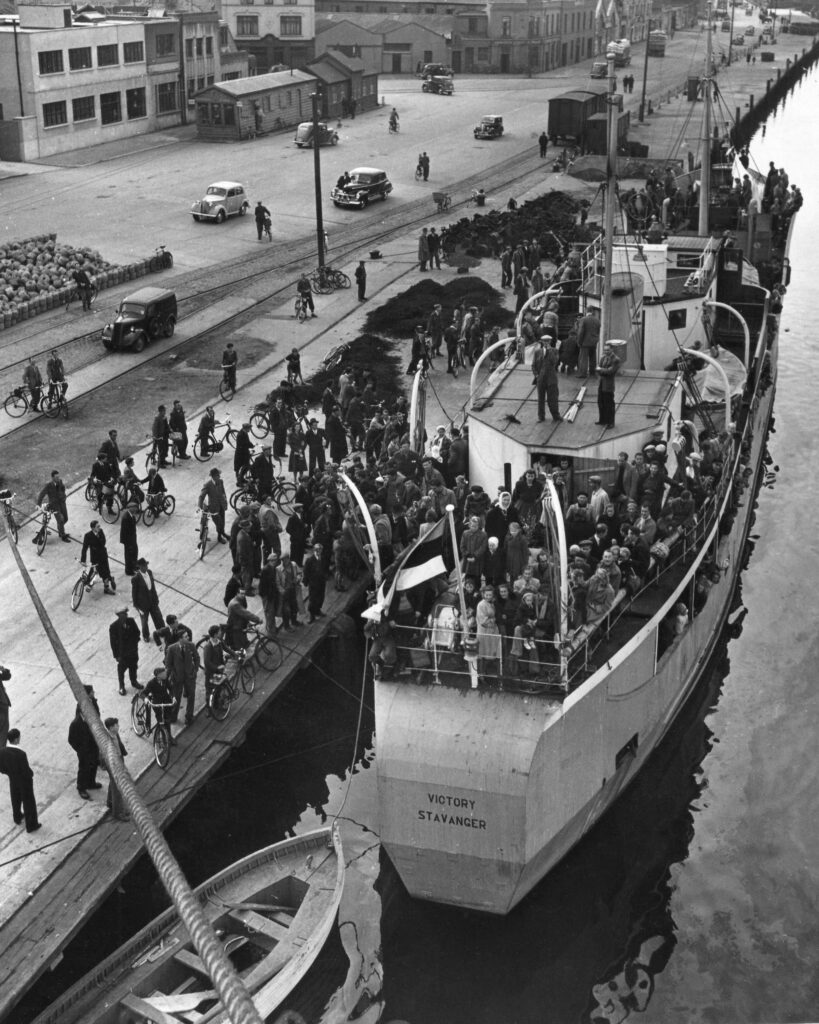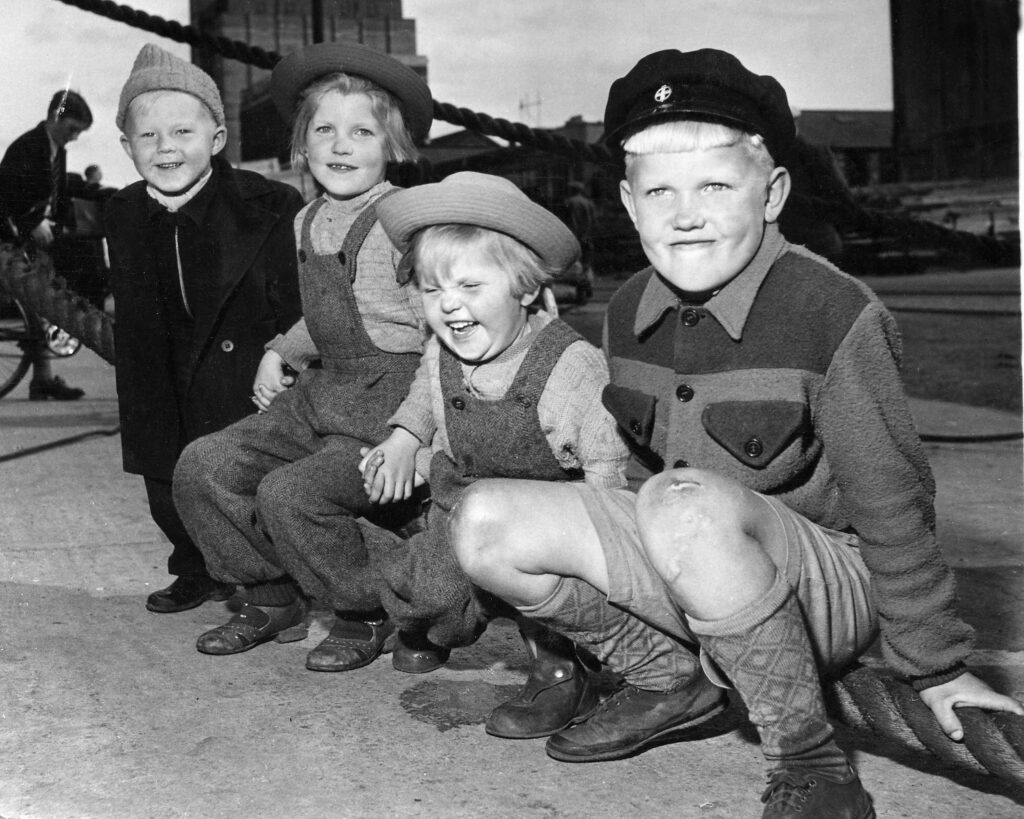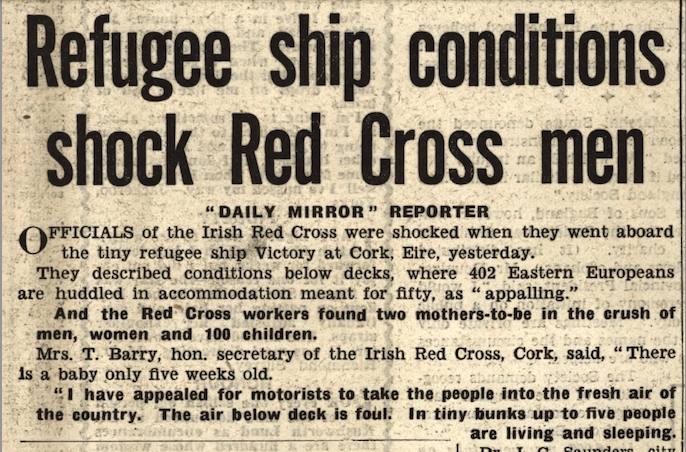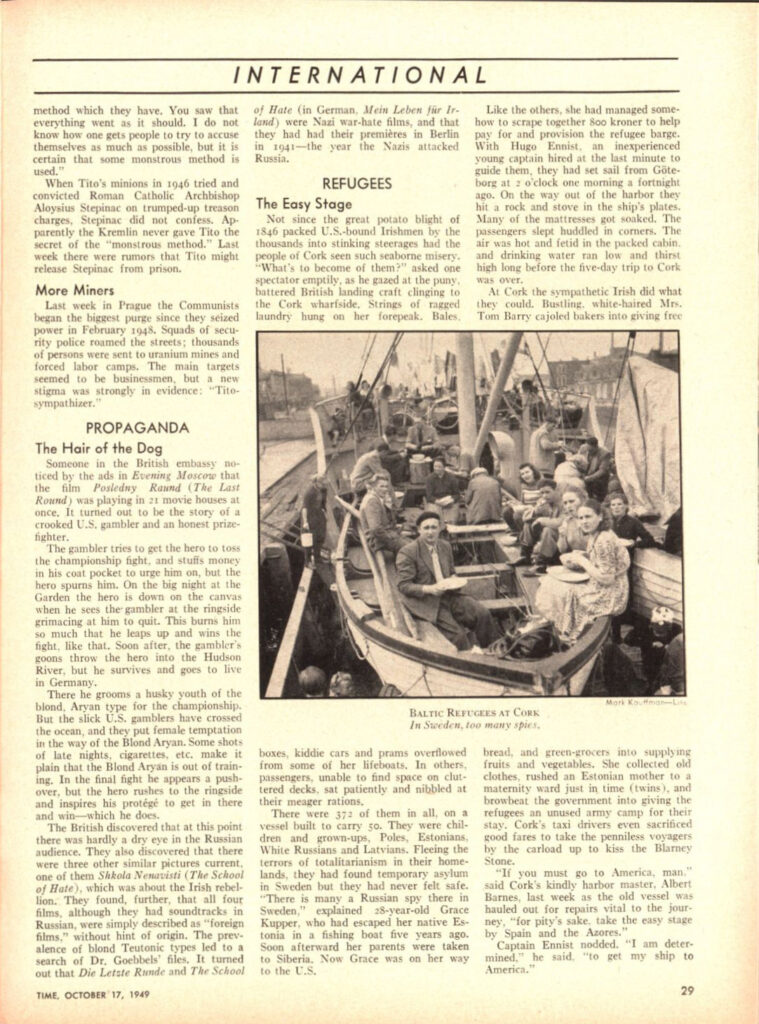Boats

The Victory in Cork harbor, Ireland
Victory
The Victory did not make it to Canada, but most of its 385 passengers did. Voldemar Jürgenfeldt and Pastor Jaan Gnadenteich organized the voyage from Sweden in 1949. The thin-hulled British landing craft was designed to transport up to 50 soldiers across the English Channel, not hundreds of civilians thousands of miles across the Atlantic. After World War II, the ship was sold and converted in Norway to accommodate up to 150 passengers. However, the new Estonian owners crammed about 385 refugees on board by selling shares through the Kalev Shipping Company.
Passage cost 800 Swedish kronor and shares were bought desperate refugees who had tried to immigrate legally to the United States and Canada, but faced obstacles due to income requirements. Most of the passengers were Estonians, but there were also Poles, Finns, Lithuanians, Latvians, and other nationalities. The group included about 100 children.
It turned out that Jürgenfeldt was not a properly qualified captain, so the shareholders hired August Voksepp, an experienced long-distance skipper instead. But he quit after one day and Hugo Ennist, the helmsman, was named captain.

Children from the Victory in Ireland. Toivo Palango, far left, later reached America with his parents on the Aura.
The Victory was scheduled to depart in spring 1949. Ongoing delays caused problems for the refugees who had sold everything before traveling to Göteborg because they expected to leave Sweden quickly. Many had nowhere to go and ended up living on the ship.
By the end of August, the captain advised the Victory might depart on short notice and everyone moved on board. Jürgenfeldt and Gnadenteich did not join the refugees on their journey, but before they left Gnadenteich gave them a slaughtered pig for food.
After months of delays, word spread that the Victory would sail September 1. However, Swedish maritime inspectors ruled that the ship was unseaworthy and refused to authorize its departure with so many passengers on board. Shipping inspector Sven Sellström described the conditions on board as deplorable and feared they would worsen if the Victory was caught in a storm.

Daily Mirror, England, October 4, 1949
The crew ignored the orders and the Victory slipped out of port at 2 a.m. on September 25, 1949, flying a Norwegian flag. Swedish police alerted customs officials who chased the ship and ordered it to stop, firing rockets, but to no avail.
The ship continued sailing until it ran aground a few hours later, causing a large hole at the bow above the waterline. Since it could still sail, the Victory continued and limped into Cobh harbor, Cork, Ireland, on September 30.
Passengers arrived thirsty, hungry, and seasick. The organizers wanted to repair the ship and resume the journey, but the Irish authorities ruled it would not make it across the Atlantic and moved the ship to a berth behind a closed drawbridge to prevent a possible escape.

TIME magazine on October 17, 1949, reported on the plight of the Victory: “Not since the great potato blight of 1846 packed U.S.-bound Irishment by the thousands into stinking steerages had the people of Cork seen such seaborne mistery.”
Newspapers compared the overcrowded Victory to the “coffin ships” that had sailed from Cork exactly a century earlier during the Great Irish Famine. Watch a 1949 newsreel about the ship here.
Perhaps in response to that tragic anniversary, officials and townspeople treated the refugees very generously, despite having limited means themselves. After discussions about what to do with so many people, authorities made arrangements for them to live in a former army camp run by the Red Cross at Rockgrove near Cork. Since only a few passengers had visas and could travel onward legally, the majority of the refugees stayed in Ireland for months. During the wait they were required to work if they wanted Red Cross support.
The Canadian government sent a team to Cork to screen the refugees to ensure those leaving Ireland would be admitted to their new homeland. The Canadian Lutheran World Federation actively supported their resettlement, sponsoring refugees and loaning funds so they could make the onward journey. Most of the passengers arrived in Halifax, Canada, by spring 1950.
The Victory was the last large Viking ship to try to make its way from Sweden across the Atlantic. It was ensnared in legal proceedings in Ireland until fall 1951, when it was bought by a Norwegian who planned to sail it to Norway.
Photographs reproduced with permission from the Estonian Maritime Museum.
